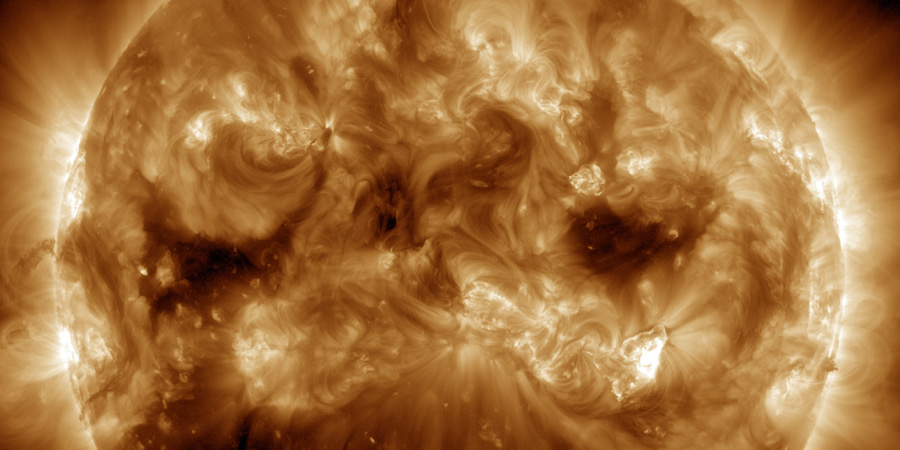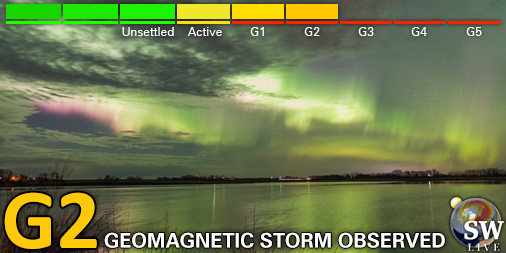Viewing archive of Thursday, 30 January 2014
Solar activity report
Prepared by the NOAA © SWPC and processed by SpaceWeatherLive.com
Joint USAF/NOAA Report of Solar and Geophysical Activity
SDF Number 30 Issued at 2200Z on 30 Jan 2014IA. Analysis of Solar Active Regions and Activity from 29-2100Z to 30-2100Z
IB. Solar Activity Forecast
IIA. Geophysical Activity Summary 29-2100Z to 30-2100Z
IIB. Geophysical Activity Forecast
III. Event Probabilities 31 Jan to 02 Feb
| Class M | 60% | 60% | 60% |
| Class X | 10% | 10% | 10% |
| Proton | 01% | 01% | 01% |
| PCAF | green | ||
IV. Penticton 10.7 cm Flux
Observed 30 Jan 161 Predicted 31 Jan-02 Feb 165/170/175 90 Day Mean 30 Jan 152
V. Geomagnetic A Indices
Observed Afr/Ap 29 Jan 006/006 Estimated Afr/Ap 30 Jan 007/007 Predicted Afr/Ap 31 Jan-02 Feb 005/012-006/008-006/005
VI. Geomagnetic Activity Probabilities 31 Jan to 02 Feb
| A. Middle Latitudes | |||
|---|---|---|---|
| Active | 05% | 05% | 05% |
| Minor storm | 01% | 01% | 01% |
| Major-severe storm | 01% | 01% | 01% |
| B. High Latitudes | |||
|---|---|---|---|
| Active | 15% | 15% | 15% |
| Minor storm | 15% | 15% | 15% |
| Major-severe storm | 05% | 05% | 05% |
All times in UTC
Current data suggests there is a slight possibility for aurora to appear at the following high latitude regions in the near future
Rovaniemi, Sodankylä, UtsjokiKirkenes
Murmansk, Norilsk, Vorkuta
Latest news
Latest forum messages
Support SpaceWeatherLive.com!
A lot of people come to SpaceWeatherLive to follow the Sun's activity or if there is aurora to be seen, but with more traffic comes higher server costs. Consider a donation if you enjoy SpaceWeatherLive so we can keep the website online!

Latest alerts
Saturday, 22 March 2025
23:45 UTC - Geomagnetic activity
Minor G1 geomagnetic storm (Kp5) Threshold Reached: 23:37 UTC
Strong G3 geomagnetic storm watch for 23 March
Yesterday around 16 UTC an M1.2 solar flare took place around sunspot region 4028. The solar flare triggered a filament eruption which erupted from the center of the earth-facing solar disk.
Read more12:18 UTC - Hemispheric Power Index
The OVATION model predicts the Hemispheric Power Index to reach 75GW at 13:10 UTC
03:45 UTC - Geomagnetic activity
Minor G1 geomagnetic storm (Kp5) Threshold Reached: 03:35 UTC
03:15 UTC - Geomagnetic activity
Moderate G2 geomagnetic storm (Kp6) Threshold Reached: 02:59 UTC
Space weather facts
| Last X-flare | 2025/02/23 | X2.0 |
| Last M-flare | 2025/03/21 | M1.2 |
| Last geomagnetic storm | 2025/03/22 | Kp6- (G2) |
| Spotless days | |
|---|---|
| Last spotless day | 2022/06/08 |
| Monthly mean Sunspot Number | |
|---|---|
| February 2025 | 154.6 +17.6 |
| March 2025 | 142 -12.6 |
| Last 30 days | 141.3 -10.4 |






